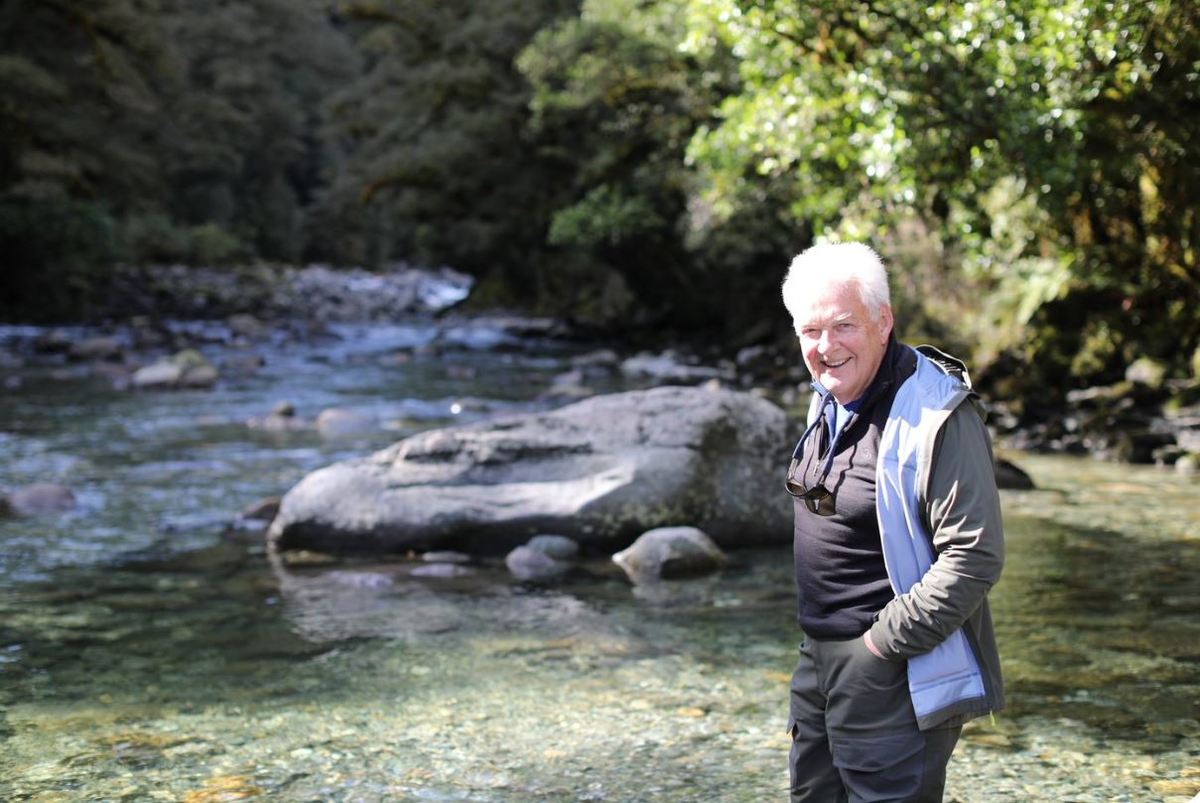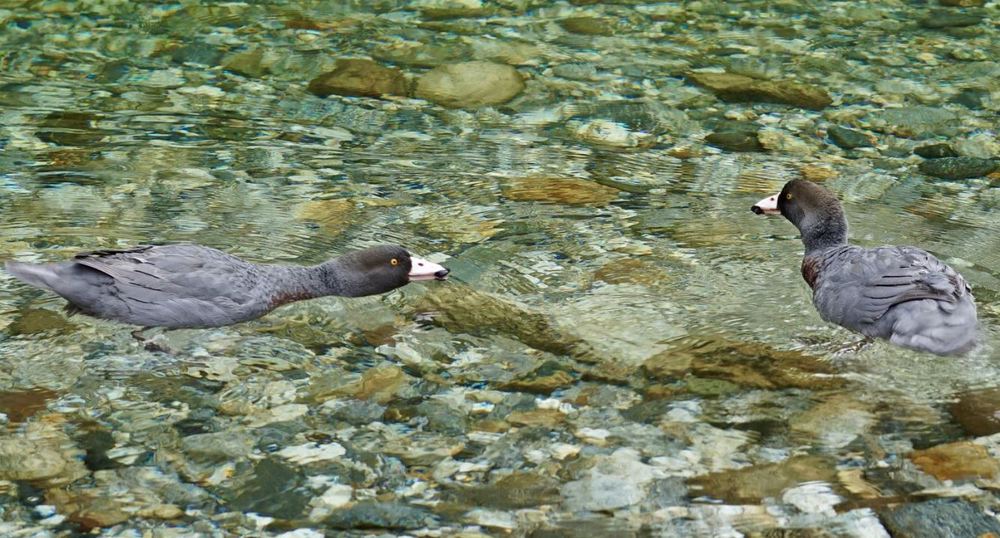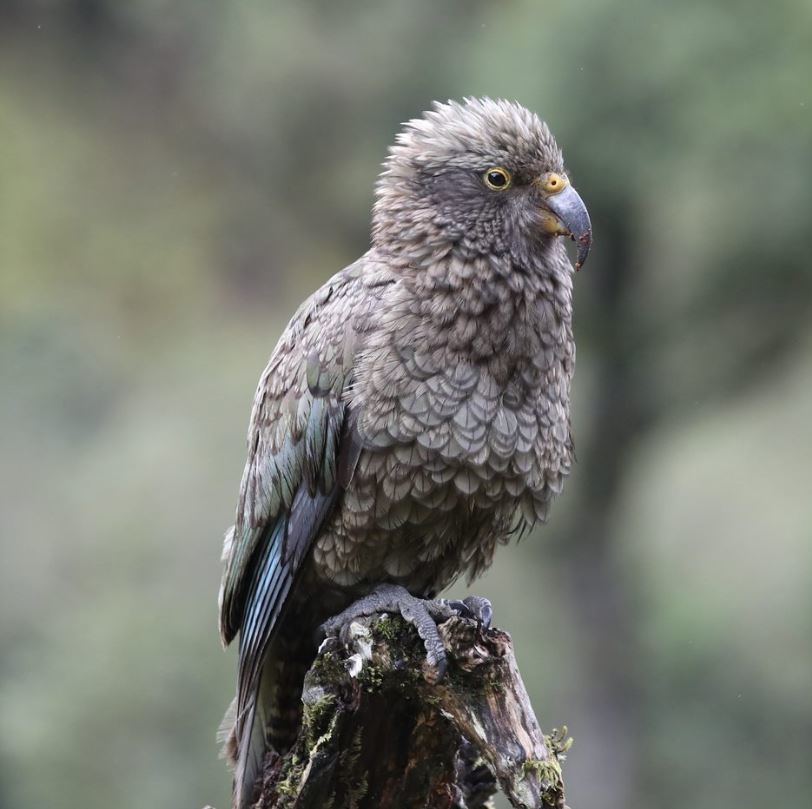Landpower adopts Fiordland valley
Paul Taylor
08 March 2021, 1:02 AM
 Herby Whyte, Founder of Landpower, at the Irene River, Fiordland National Park
Herby Whyte, Founder of Landpower, at the Irene River, Fiordland National ParkLandpower's founder Herby Whyte spent much of his childhood exploring the bush around his Invercargill home.
His ensuing lifetime interest in conservation and birdlife has led to his company becoming the first major corporate funder of the Valleys Conservation Project.
The farm machinery distributor has pledged to help protect native birdlife from introduced predators in Fiordland’s remote Irene Valley.
Landpower will assist in establishing a network of 400 traps in the upper 20km of the river valley and maintain them for the next five years.
It will also fund a four-bed hut for volunteers.
The Valleys Project offers people and companies the opportunity to undertake significant yet affordable conservation projects, in partnership with the Department of Conservation (DOC) and the New Zealand Nature Fund.
Its main aim is to trap stoats and rats, which have wreaked havoc on native bird populations.
Sponsors ‘adopt’ a geographically specific region and provide the necessary finance and volunteers to install and service the automatic traps every six months.

The Irene River Valley in Fiordland National Park
Whyte's involvement came about after he talked to fellow Arrowtown resident and Valleys Project Leader Dr Michael Fisk about his predator reduction efforts in Fiordland.
A recently retired ophthalmologist, Dr Fisk has been working with DOC in this remote region for the past five years.
"Mike didn't have to pitch anything to me, I believe wholeheartedly in what his Valleys Project is doing," Whyte says.
"Conservation of birdlife is really important to me.
"I grew up on the outskirts of Invercargill near a scenic reserve which was my playground.
"My grandfather knew every tree, plant and bird, and he spent hours with me, passing on his knowledge and showing me where to find the nests. As a young fellow I was really tied to nature and learning about all the different birds.
"That foundation has stayed with me over the years and as Landpower has grown to the company it is today, it has become important to me to support initiatives close to my heart."
Whyte's concurrent interests in fishing and tramping led to him joining Dr Fisk on a reconnaissance trip into the Irene Valley last year.
Flowing 25 km from a saddle in the Museum Range of the Southern Alps to the northern arm of Charles Sound, the river is home to a sizeable residual population of whio, kea, kiwi, kaka and many other native species . It adjoins DOC’s major work in the Murchison Mountains.
"I could see first-hand that Mike had the resources, knowledge and team of people to handle the mammoth task of predator reduction.
"Landpower has some employees who, like me, are also passionate about conservation, so it seemed to be a natural fit that the company would make a long-term commitment to the Irene Valley," he says.
Dr Fisk has spent many years tramping and deerstalking in several of New Zealand’s National Parks but has always been drawn to Fiordland.
"Over the years we became very aware of the decline in the bird population.
"It's really striking, devastating really, particularly in catchments that are to the east of the Great Divide and exposed to predator migration from the farmlands," he says.
In 2014 he was hunting in the Irene when an encounter with a pair of Whio piqued his interest in protecting this rare duck.
"The whio are delightfully engaging and not at all shy of humans -often approaching within a meter or two.
"This pair landed in the pool alongside us and made themselves known with the male's unique whistle and the female's raspy response.
"Their population was down below 3000 back then and although they are making a bit of a recovery now, they remain seriously endangered and recent flooding hasn’t helped.
"After that visit I read about their predicament and decided it was time to have a go at doing something positive," Dr Fisk says.
"Without predator control less than 5% of our juvenile native birds survive –it's a terrible tragedy."

Endangered Whio (New Zealand Blue Duck) on the Irene River, Fiordland National Park
He approached DOC about starting a conservation project in Fiordland and the Valleys Project began in 2016 with a pilot project in the adjoining Cozette Valley.
It has seen a doubling of the whio population in that catchment over the last five years.
"One person and a group of friends helping out can only achieve so much," Dr Fisk explains.
"We hit on a strategy of trying to interest individuals and corporates in ‘adopting’ a valley to give a sense of ownership and engagement.
"Fiordland lends itself to this approach as each of the large, glaciate driver valleys are bounded by precipitous mountain boundaries which naturally divide the landscape into separate geographic regions and act as something of a barrier to predator ingress.
Ideally groups will adopt a valley from a selection chosen by DOC, provide the necessary finance, set out the traps, and regularly service the equipment.
The Valleys Group Committee can help with relationships, logistics, equipment and manpower with over 300 people on the mailing list.
They're keen to hear from more people, both volunteers and sponsors.
"Lots of New Zealanders are strongly bound to our high country and backcountry through fishing deer stalking, tramping and ornithology.
"They are the demographic of people we hope to interest. Some of them are fortunate enough to have more money than they can spend in several lifetimes and want to see something constructive given back to nature.
"Adopting a Valley is one way they can contribute and make a difference."
The New Zealand Nature Fund is the Charitable Foundation which provides a financial framework for this work.
The Valleys Project costs are all met by donations to the Nature Fund, giving tax deductibility and GST recovery.
This makes the work very efficient financially and ensures that contributions are managed transparently and at arm's length by professionals.
Landpower’s involvement is a joint venture funding-wise, with DOC also making a generous contribution from its Community Fund.
Volunteers also donate to the costs of helicopter transport and food for the trips.
Initially a network of around 400 traps will be established in the valley.
Landpower’s contributions will enable a 4-bed hut to be installed in the valley, giving volunteers protection from Fiordland’s weather and providing a base for professional possum trappers for whom the Valleys Project provides helicopter transport.
The additional funding will also allow the project to utilise new trapping technology under development through the Predator Free 2050 initiative and subsidise the involvement of younger conservationists in the expeditions.

Kea on the banks of the Irene River, Fiordland National Park
Department of Conservation Director-General Lou Sanson says: "Michael Fisk and the Valleys Conservation Project have been an inspiration to so many New Zealanders.
"In some of the most remote and spectacular parts of Fiordland, they have proven they can make a difference in restoring the dawn chorus and bringing back so many of New Zealand’s precious birds from the brink of disappearing in one of the last great wilderness areas left on the planet."
Landpower staff will be given the opportunity to visit the Irene Valley and participate in trap maintenance.
"We hope that Landpower’s involvement will act as an inspiration to other corporates to play a part in conservation," Whyte says.
FOOD | DRINK
AG | TRADES & SUPPLIES
